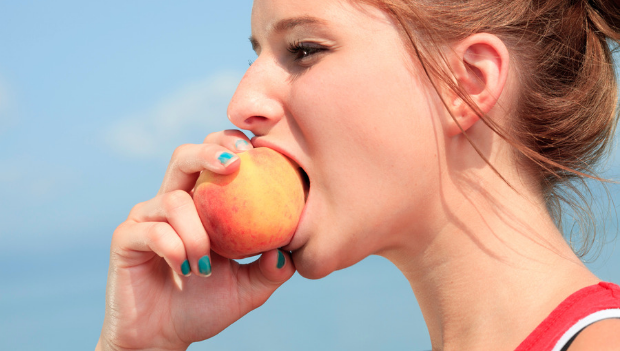
Nutrition is a vital but often overlooked component of developing athletes, especially in adolescents. This age range is typically when young active individuals begin to be more serious with athletic training and competition.
Athletes at any age are at risk of over or under consuming energy needs; however, adolescent athletes are at an increased risk of these extremes. Under consuming calories can come with detrimental consequences to performance and general health as this age range is already experiencing high energy needs due to high daily general activity and physical growth and maturation.
Underconsumption
Constant low energy balance can result in short stature, illness, low bone density, menstrual dysfunction, loss of muscle mass and an inability to focus on mental tasks. Being on the go for school and practices, relying on outside sources for food (parental, school, coaches), lacking knowledge of proper dietary needs and being highly susceptible to peer pressures on diet and body appearance can all create a tricky and problematic situation for these athletes when it comes to consuming a diet that is sufficient to meet health and performance needs.
Overconsumption
Other athletes in this age range may struggle with sluggish performances due to over consuming calories from a typical youth diet of snacks, simple carbohydrates and pre-made meals. Consistently taking in more calories than the body requires can result in large body mass, shortness of breath, joint pain and risk of poor health conditions such as diabetes. Implementing a solid dietary foundation that relies on a variety of whole, colorful foods at a young age is crucial to ensuring the athlete meets the physical demands of the sport, as well as promoting good general health outcomes.
General Needs
Energy needs vary highly based on individual body composition, state of growth maturation and activity levels. Active teenage females might need up to 3000 calories a day while males could see daily caloric needs at up to 4000. A general macronutrient breakdown for these calories is 30 percent fat, 20 percent protein and 50 percent carbohydrate. This intake should come from all food groups to supply the full range of needed vitamins and minerals. Regardless of the calories needed, adolescents should avoid restrictive and trendy diets that can cause unhealthy relationships with food and create vitamin/mineral deficiencies.
Nutrition on the Go
Since this age group consumes much of its food outside the home at school, practices, social events or competitions, good options for travel nutrition should be established. Parents should aim to stock grab-and-go snacks that are nutrient rich, such as whole grain crackers, fruit, sliced vegetables, nut butter sandwiches, granola and yogurt, oatmeal packets, trail mixes, hard boiled eggs, sport bars, chocolate milk and tuna salad packs that athletes can easily store in a gym bag or school locker.
Having semi prepared meals that are easy to fix on their own is also helpful. Try frozen options like rice bowls, bean burritos, whole grain waffles, smoothie packs and veggie blends to simplify healthy eating when they’re hungry and in a hurry. Talking through cafeteria options and including the athlete in meal prep and grocery shopping can also help establish a healthful connection with food.
Beyond calories and macronutrients, there are certain micronutrients more important to this age group. Vitamin D, calcium and iron are all vital to energy utilization and strong body structure. Foods such as green vegetables, dairy, nuts, seeds, milk, fortified juices, fortified whole grains, lean meat and seafood should be encouraged. Physical checkups that include assessing personal BMI percentiles over time, as well as blood panels to assess nutrient levels, can provide great insight into the athlete’s nutritional health.
Timing for Optimal Performance
Just like adult athletes, adolescents should be mindful of nutrient timing for optimal energy levels and performance. Meals should be consumed two to three hours prior to physical exertion to allow for full digestion and limit gastric distress. Aim to have a carbohydrate-rich snack, such as a banana or granola bar, 60 to 30 minutes prior to training to boost the energy available for the body to use. When training lasts over 90 minutes, athletes will need to learn to tolerate food while exercising. Gels, bars and chews can be used to prolong performance at a rate of roughly 45 grams of carbohydrate an hour.
A particular risk of this athletic population is the tendency to push beyond their limits to appear tough and please peers and coaches. This can lead to excessively diminishing caloric and hydration stores if the athlete ignores signs of fatigue, hunger, thirst, heat, pain and other physiological factors. Coaches should be sure to provide ample hydration and nutrition breaks throughout practices to encourage athletes are able to meet needs without fear of being singled out or appearing weak.
After sessions, athletes should consume a recovery drink or snack that adheres to the three or four to one ratio of carbohydrate to protein. Since these athletes train frequently and are generally more active than adult athletes, this immediate recovery is important to rebuild and replenish taxed muscles and keep athlete from becoming depleted, which can promote injury and poor recovery.
Overall the nutritional needs of adolescents aren’t that different from that of active adults. Energy intake should be appropriate to meet demands, nutrient rich foods should be the focus of the diet and attention should be paid to timing of nutrition and fuel. The biggest challenges for this age group are situational and need to be addressed in a healthful, balanced way for optimal health and athletic performance. if your athlete is struggling to make food choices that are in line with creating a high performing and healthy body, contact a sports dietitian for assistance.
READ THIS NEXT: The Right Portion Size for Every Age









Discuss This Article